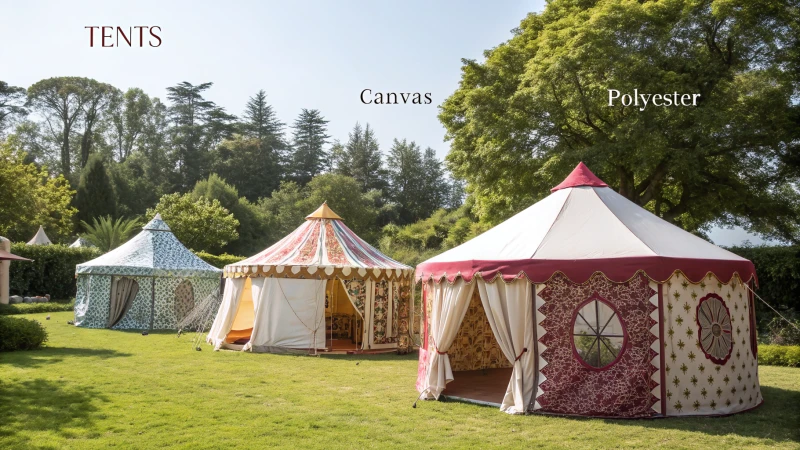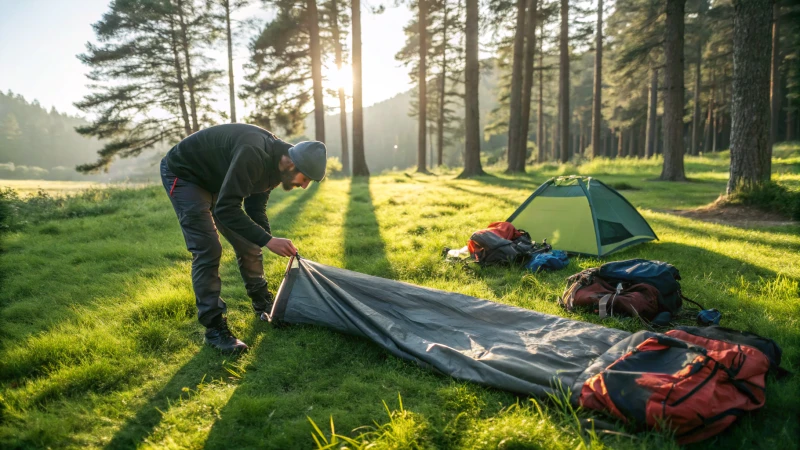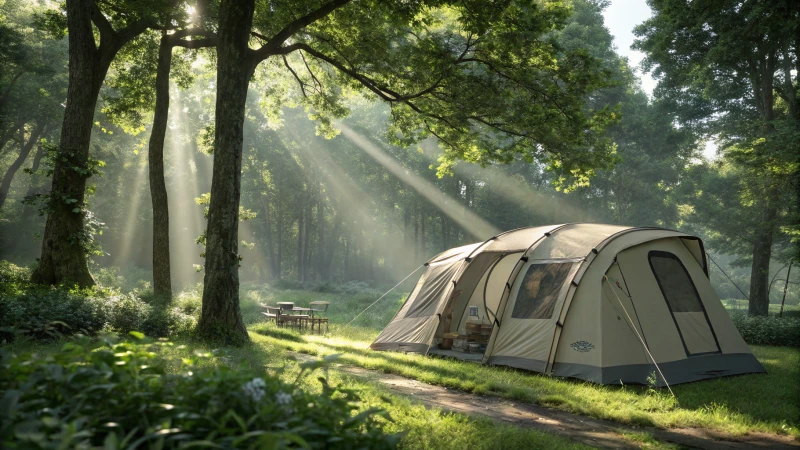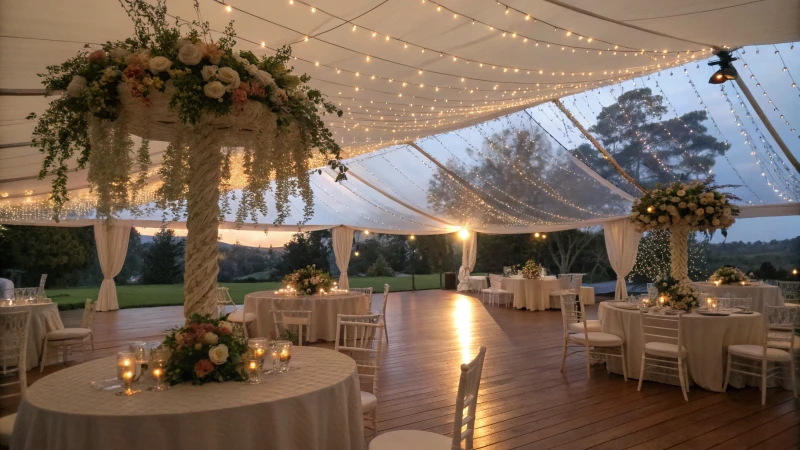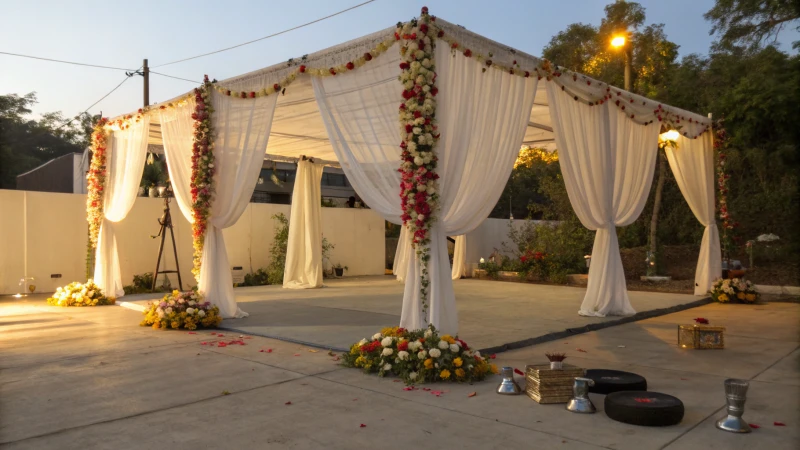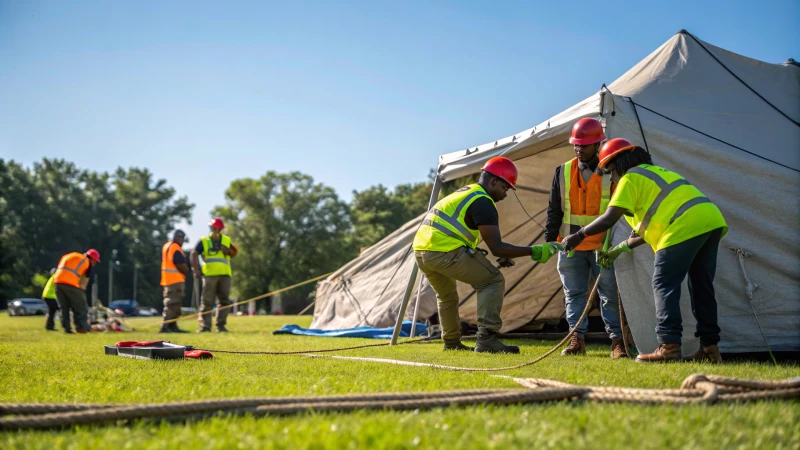
Setting up a large tent can feel like orchestrating a grand symphony, with safety playing the role of the conductor.
To ensure safety when setting up large tents, it’s essential to choose a flat, stable location, utilize top-quality materials, secure the tent with proper anchoring, and strictly follow manufacturer guidelines. Regular inspections and team training are key to reducing risks effectively.
While these initial steps lay a solid groundwork, diving into the details of each safety measure can make a world of difference. For instance, I once set up a massive wedding tent on uneven ground—it seemed fine until the rain started. Lesson learned: always scout your location meticulously. By understanding the full scope of these precautions, you can avoid similar pitfalls and ensure your setup is as secure as it is impressive.
Flat, stable ground is essential for tent safety.True
A flat and stable surface prevents uneven load distribution, reducing collapse risk.
Ignoring manufacturer guidelines can enhance tent safety.False
Ignoring guidelines increases the risk of improper setup and potential hazards.
How Do You Choose the Perfect Tent Location?
Finding the perfect spot to pitch your tent isn’t just about setting up camp; it’s about crafting the perfect outdoor escape.
Choosing the best tent location involves finding flat, stable ground, steering clear of hazards, and considering weather risks. Ensure the area is free of debris and avoid spots near water sources that could flood.
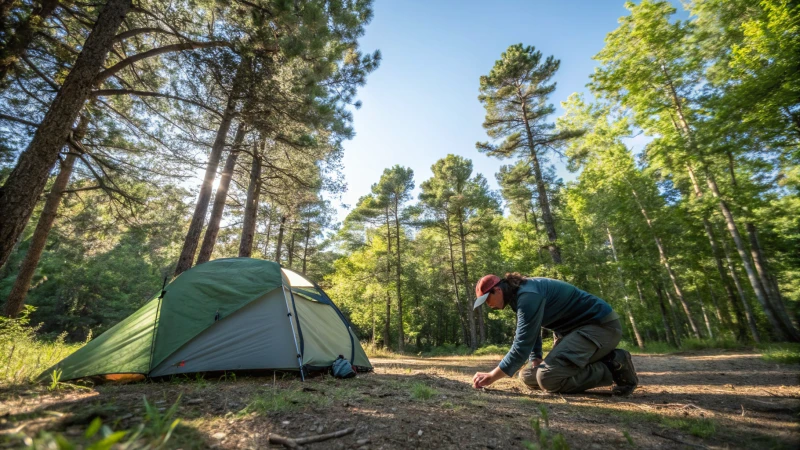
Evaluating Terrain
Let me tell you, there’s nothing quite like laying down in your tent at night and feeling comfortable knowing you’ve picked the right spot. Start by finding flat, stable ground. I remember this one time when I set up on what I thought was a nice, grassy patch, only to spend the night sliding off my sleeping pad because it was slightly downhill. So, be sure it’s level and free from loose soil or rocks that might make things uncomfortable or worse, unstable.
Proximity to Water
I learned the hard way that camping too close to water can be risky. During a trip by a lovely river, a sudden storm turned my peaceful site into a mini flood zone. Keep your tent at least 200 feet from lakes or streams. It’s not just about avoiding floods; it’s also about keeping our beautiful wild places intact.
| Consideration | Recommendation |
|---|---|
| Distance from Water | At least 200 feet away |
| Elevation | Slightly elevated above water level |
Weather and Safety Considerations
Before choosing your spot, always check the weather forecast. Trust me, setting up in a storm isn’t fun. Look for areas shielded from high winds and away from potential hazards like falling branches. On another trip, I had to re-pitch my tent at midnight because of wind—it wasn’t ideal.
If you’re near trees, do a quick health check. Healthy trees offer shade and a windbreak, but steer clear of any with visible rot or instability.
Legal and Environmental Guidelines
Following local regulations isn’t just a suggestion—it’s crucial for preserving these natural wonders for everyone to enjoy. I once camped in a spot that seemed perfect but later realized it was off-limits due to environmental protection rules. Now I always double-check local guidelines.
Respecting wildlife is also essential. Avoid setting up near animal trails or habitats to minimize disturbance and keep yourself safe.
For more detailed guidelines on evaluating campground regulations1, reach out to local park authorities.
Practical Accessibility
Balancing seclusion with accessibility can make or break your experience. I once camped too far from paths and amenities, which made things inconvenient when I needed to make a quick run back to the car.
If you’re just starting out with camping, researching beginner camping tips2 could make all the difference by highlighting essentials you might not have considered.
Ultimately, choosing your tent location is about weighing many factors—terrain, weather, legal guidelines, and personal preferences. By taking these into account, you’re setting yourself up for a safe and memorable camping adventure.
Tents should be set up within 200 feet of water sources.False
Setting tents too close to water increases flood risk and habitat disturbance.
Healthy trees provide shade and windbreaks for tents.True
Healthy trees are beneficial, but avoid those with rot or instability.
How Can You Ensure Your Tent is Properly Anchored?
Ever watched your tent flap like a wild flag in the wind, threatening to take flight? I’ve been there, and trust me, it’s no fun. Let’s anchor it down properly!
To anchor your tent securely, choose the right ground, use the correct stakes or weights, and keep all guy lines tight. Regularly check and adjust for weather changes.
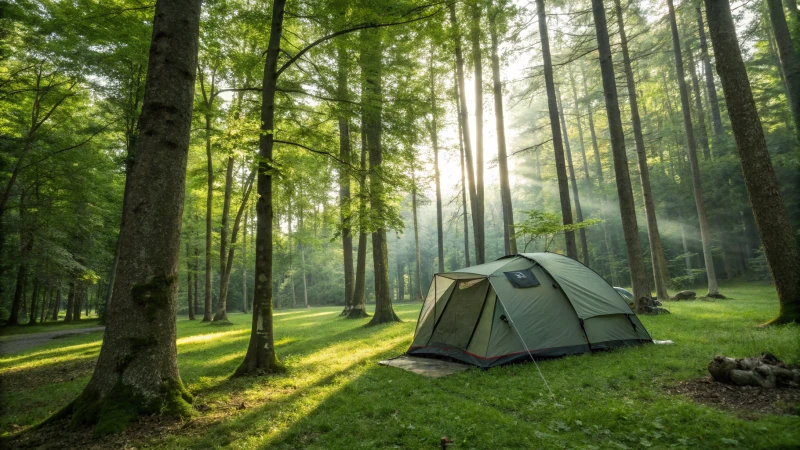
Choosing the Right Location
I remember setting up my tent on what seemed like the perfect grassy knoll. It was picturesque, but oh boy, did that soft soil cause trouble when the winds picked up. Now, I always look for flat, stable ground. Avoiding loose soil or debris is key. If you’re like me and enjoy a good weather challenge, always check forecasts for potential wind impacts3. It’s a game changer!
Using Appropriate Equipment
From experience, I can tell you that investing in quality equipment saves a lot of headaches. On a camping trip, I once used flimsy plastic stakes that came with the tent. Big mistake! For soft grounds, long metal stakes are my go-to. For those stubborn hard surfaces, weighted items like sandbags or water barrels work wonders.
Here’s a handy reference I’ve come up with over time:
| Terrain Type | Recommended Anchors |
|---|---|
| Soft ground | Long metal stakes |
| Rocky terrain | Screw-in anchors |
| Concrete | Weighted ballasts (sandbags) |
Ensuring Proper Tensioning
Nothing beats the satisfaction of seeing perfectly taut guy lines! Over time, I’ve learned that keeping them tight not only prevents sagging but also stands firm against unexpected gusts of wind. Always test the tension regularly—especially when the weather decides to play tricks on you. Learn more about tension techniques4.
Regular Monitoring and Maintenance
Once your tent is set up and looking sturdy, don’t get too comfortable! I’ve made it a habit to do routine checks, especially after any significant weather event. Keeping stakes and guy lines in check can save you from late-night adjustments.
Adhering to Manufacturer Guidelines
In my earlier days of tent pitching, I’d often overlook the instructions in my eagerness to set up camp quickly. Big mistake! Every tent has its quirks. Following the manufacturer’s setup instructions can mean the difference between a cozy night under the stars and a midnight tent collapse. Stay informed about manufacturer tips5.
Loose soil is ideal for anchoring tents.False
Loose soil can cause instability; flat, stable ground is better.
Guy lines enhance a tent's wind resistance.True
Taut guy lines prevent sagging, making the tent more wind-resistant.
What Weather Conditions Should Be Considered During Tent Setup?
Remember that camping trip when the wind almost took our tent for a joyride? Weather conditions are crucial when setting up a tent.
To set up a tent safely, consider wind, rain, temperature, and ground conditions. Choose a sheltered spot away from strong winds and potential flooding areas. Use proper anchoring for stability.
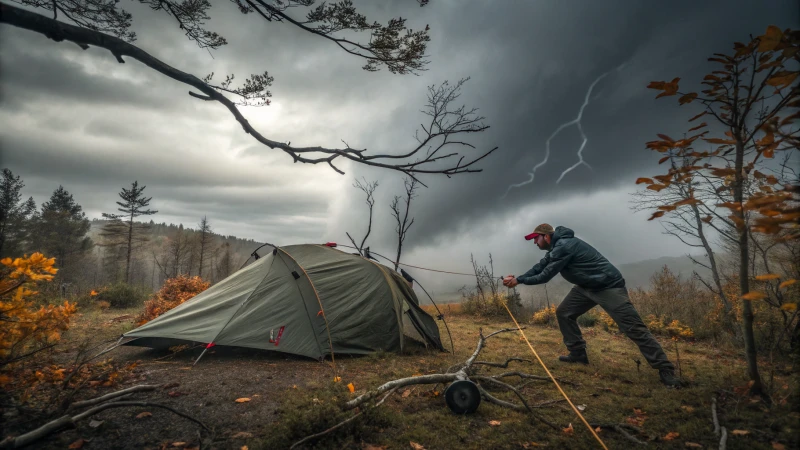
Wind Considerations
I still vividly recall that windy night by the lake, where every gust felt like it might lift us off the ground. Selecting a spot shielded by trees or hills isn’t just about comfort—it’s essential. Secure your tent with strong stakes and guy lines, and if the wind’s really howling, think about adding weights or sandbags.
Wind Speed Table:
| Wind Speed (mph) | Recommended Action |
|---|---|
| 0-10 | Normal setup |
| 11-20 | Use extra stakes |
| 21-30 | Avoid setup or take precautions |
| 31+ | Postpone setup |
Rain and Water Management
Once, during a torrential downpour, my tent turned into a mini swimming pool because I hadn’t chosen an elevated spot. Trust me, opting for higher ground can save you from waking up soggy. Make sure your tent is waterproof, and clear any pooling water quickly. Learning how to waterproof6 your tent beforehand can really pay off.
Temperature Variations
Camping in different climates taught me one thing: temperature can make or break your experience. On one chilly night, I regretted not having enough insulation. Ensure your tent is prepared for cold by being insulated and ventilated to avoid condensation. In hot weather, choose tents with UV protection to keep cool.
Ground Conditions and Terrain
I’ve learned that stable ground is like the unsung hero of camping. On rocky terrain, I once spent the night shifting uncomfortably. Avoid uneven ground for stability, and use a groundsheet to protect your tent floor and improve comfort.
Ground Type Table:
| Ground Type | Anchoring Tips |
|---|---|
| Grass | Standard stakes work well |
| Sand | Use longer, wider stakes |
| Rocky | Find soft spots or use rock anchors |
Understanding these factors ensures a safe and enjoyable camping adventure. For more tips on site selection, dive into camping guides7 that offer detailed terrain analysis.
Always keep an eye on the forecast and pack gear that can handle unexpected weather twists. This way, you’ll always be one step ahead of nature’s surprises.
Tents should be set up in areas prone to flooding.False
Tents should be set up in elevated, dry areas to avoid flooding.
Wind speeds over 30 mph necessitate postponing tent setup.True
High winds can damage tents; it's safer to wait for calmer conditions.
Why Should I Follow Manufacturer Guidelines?
Have you ever skipped reading instructions and regretted it later? Manufacturer guidelines are there for a reason, and they can save you from a lot of headaches!
Following manufacturer guidelines is essential because they ensure safety, enhance performance, and maintain warranty compliance. These instructions provide clear directions for setup, operation, and maintenance, reducing risks and extending product lifespan.
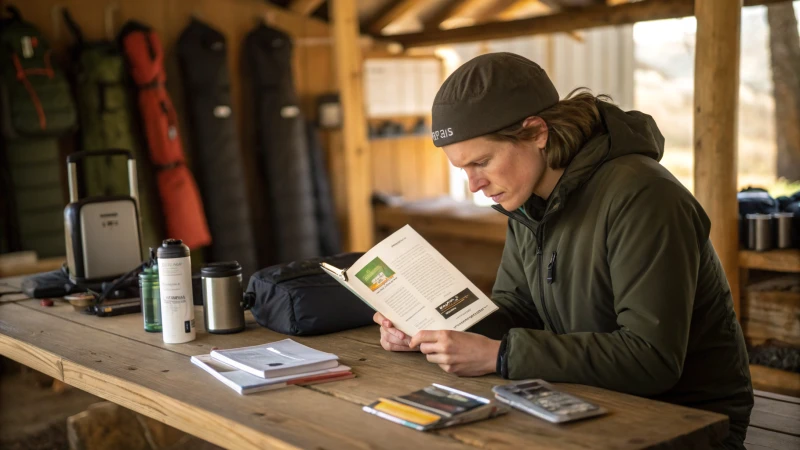
Understanding the Basics
I remember the first time I set up a large event tent8. I thought I could wing it without the manual, relying on my intuition. But after hours of struggling and a near collapse, I realized those instructions weren’t just there to fill space—they were crafted to prevent exactly those kinds of mishaps. Manufacturer guidelines are designed to ensure the safest and most efficient use of products. They prevent structural failures and safety hazards, making them indispensable.
Safety First
Ignoring guidelines isn’t just risky—it’s downright dangerous. Once, I watched a friend insist on cramming too many people into a tent. Sure enough, the structure gave way, causing panic and chaos. It was a stark lesson in why occupancy limits exist. Adhering to these guidelines isn’t just about avoiding trouble; it’s about keeping everyone safe.
| Safety Guidelines | Potential Risks of Non-Compliance |
|---|---|
| Occupancy Limits | Structural collapse |
| Setup Instructions | Incorrect assembly leading to instability |
Ensuring Performance and Longevity
Keeping my equipment in top shape has always been a priority for me. I’ve learned that following manufacturer maintenance instructions can significantly extend the life of my products. For instance, using only approved cleaning agents has kept my industrial tents9 looking new and functioning perfectly. It’s all about preserving value by protecting sensitive materials and components.
Warranty and Legal Compliance
There was a time when I skipped a step in the maintenance routine for a customized large tent, thinking it wouldn’t matter. When something went wrong, I discovered that not following the guidelines voided my warranty. It taught me the importance of those small details in maintaining coverage and avoiding legal issues.
Industry Applications
In various industries, like healthcare or construction, adhering to manufacturer guidelines is not optional—it’s critical. In healthcare, for instance, incorrect usage of medical devices due to ignored guidelines can lead to severe health risks. Similarly, in construction, improper setup of equipment can cause workplace accidents.
Manufacturer Support and Resources
Over the years, I’ve found that manufacturers often go above and beyond to support their users. From online tutorials10 to customer service hotlines, these resources have been invaluable. They offer guidance that complements the written instructions, helping me implement safe practices more effectively.
Ignoring tent setup guidelines risks structural failure.True
Incorrect assembly due to guideline neglect can cause instability and collapse.
Manufacturer guidelines are optional for warranty coverage.False
Warranties require adherence to guidelines; non-compliance can void them.
Conclusion
Ensure safety when setting up large tents by choosing stable locations, using quality materials, proper anchoring, following guidelines, and conducting regular inspections to minimize risks.
-
Explore this link to understand local rules and environmental considerations when choosing a campsite. ↩
-
This link provides valuable insights into camping basics that can enhance your outdoor experience. ↩
-
Understanding wind impacts helps in selecting the best location and anchoring methods for tents. ↩
-
Proper tensioning techniques can significantly improve your tent’s stability and resistance to weather changes. ↩
-
Following manufacturer guidelines ensures optimal tent performance and safety during use. ↩
-
Discover practical steps to waterproof your tent, enhancing durability and weather resistance. ↩
-
Explore expert advice on choosing the ideal camping site, factoring in terrain and environmental considerations. ↩
-
Discover why adhering to tent assembly instructions prevents accidents and ensures structural integrity during events. ↩
-
Learn how proper maintenance enhances the durability and performance of industrial tents over time. ↩
-
Access tutorials and customer support resources provided by manufacturers for better product setup. ↩


